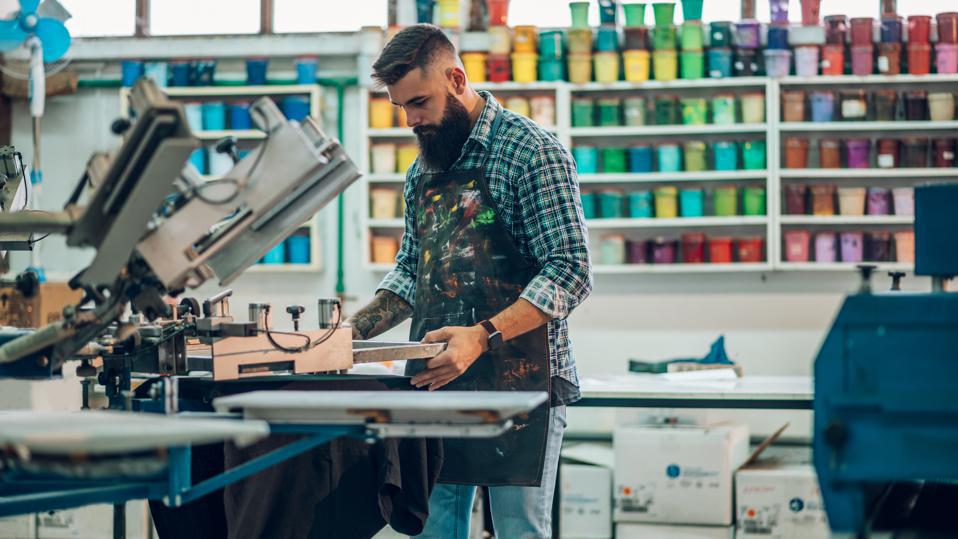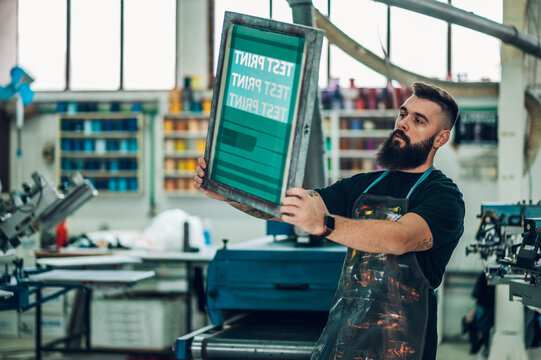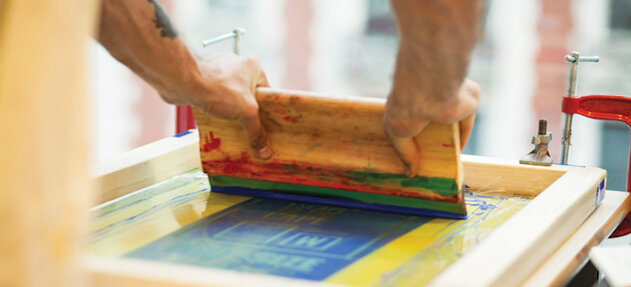Screen printing, a technique used to push ink through a woven screen onto a substrate, continues to rise in popularity due to its versatility and ability to produce vibrant designs. Whether it’s T-shirts, posters, or even electronics, the applications of screen printing are numerous.
But with popularity comes competition, and for businesses, this means that every dollar saved can be crucial. In this guide, we dive deep into strategies and insights to cut costs without compromising the quality of your prints.
Assessing Equipment Needs

Before making a purchase, it’s essential to assess your screen printing needs. The equipment landscape is vast, with machines designed for both mass production and small-batch artisans. Some businesses overspend, investing in expensive equipment that’s overkill for their needs, while others underspend, leading to bottlenecks in production.
The first step is to understand your business goals. Are you targeting mass production or boutique custom prints? Calculate your expected production rate, then match this with a machine that meets those requirements without overextending your budget.
Avoid the allure of the latest high-tech equipment unless it aligns with your business objectives. Likewise, while a manual press may seem cost-effective initially, it might not be suitable for high-volume jobs. By aligning your goals with your purchases, you eliminate unnecessary expenses.
Researching Affordable Equipment Options
Affordability shouldn’t be synonymous with inferior quality. Many industry-leading brands have dedicated their efforts to deliver cost-effective solutions without compromising on quality. Prominent companies in the screen printing supplies domain are at the forefront of this initiative. Their products exemplify durability and precision, even at competitive price points.
If, however, shelling out for brand-new equipment feels burdensome, the secondary market for used equipment beckons. Platforms like Digitsmith stand out, hosting numerous listings for pre-loved machinery.
But a word to the wise: it’s imperative to either personally inspect or delve deep into reviews of any used equipment. Scrutinize its history, delve into any existing warranties, and be wary of any signs of wear and tear that might affect its functionality.
DIY Equipment Modifications

Rather than splurging on a brand-new machine, consider rejuvenating your current one. Simple tweaks, like improving your squeegee’s efficacy with a blade upgrade or adjusting the printing bed to accommodate larger substrates, can remarkably elevate your machine’s performance. The horizon of modifications is vast, each with its potential to optimize and economize.
Yet, every DIY adventure should be approached with caution. Prioritize safety above all. Always have your equipment manuals at arm’s length, and never hesitate to consult industry experts if unsure. Digital platforms, especially YouTube channels such as Catspit Productions, are treasure troves of reliable tutorials and safe DIY strategies.
Bulk Material Purchasing
Purchasing in bulk is the screen printing equivalent of wholesale shopping. Significant savings are lurking in those larger orders. Inks, screens, meshes, and more, when procured in higher quantities, often attract substantial discounts.
Apart from the immediate financial relief, there’s also the convenience factor. Bulk buying means fewer reorders, translating to less time spent shopping and potentially fewer shipping costs.
Yet, the challenge of bulk purchases lies in storage. Proper storage safeguards the longevity and quality of materials. This involves allocating adequate space and ensuring optimal conditions, like temperature-controlled environments, especially vital for certain inks, to prevent them from degrading.
Exploring Alternative Materials

Venturing beyond traditional materials can be both economically and environmentally rewarding. Water-based inks, along with eco-friendly soy-based cleaners, are making waves in the industry.
Traditional plastisol inks, while still popular, face competition from these alternatives that often boast a softer texture and a more pocket-friendly price tag. However, remember that every material, whether conventional or alternative, brings its unique set of attributes and challenges.
For instance, the extended drying time of water-based inks necessitates additional considerations. Thorough testing is essential to discern what truly aligns with your operational requirements.
Streamlining Production Processes
Operational efficiency is the linchpin of sustainable profitability. Every step of your printing process, from the embryonic phases of design conception to the meticulous post-press finalizations, holds potential for enhancement.
Streamlining these phases can accrue considerable savings, both temporal and fiscal. The transformative power of technology shouldn’t be overlooked. We live in a digital era, where software has revolutionized traditional workflows.
Platforms like Printavo are emblematic of this shift. They serve as digital maestros, coherently organizing tasks and thereby drastically reducing human errors and superfluous waste. Integrating such tools not only bolsters efficiency but also engenders a culture of continual improvement within the workspace.
Training and Skill Development
In the intricate dance of screen printing, proficient artisans and knowledgeable supervisors form the backbone. Their expertise can act as the first line of defense against unforeseen challenges.
Ensuring that your team undergoes rigorous and regular training is a proactive approach to preempting issues, thereby averting seemingly innocuous hiccups from snowballing into substantial monetary setbacks. Instituting periodic, hands-on workshops and cultivating a culture of ongoing learning through immersive training modules can elevate the collective competence of your team.
This heightened skill set ensures judicious use of materials, masterful operation of machinery, and consistent adherence to preventive maintenance protocols, all contributing to a smoother, more cost-efficient operation.
Maintenance and Repair
The old adage “Prevention is better than cure” rings especially true here. Establishing a regimen of consistent maintenance, be it routine screen cleaning or the periodic lubrication of machinery components, averts potentially expensive malfunctions.
However, one must discern when DIY repairs are feasible and when professional intervention is warranted. Some repairs, when executed without the necessary expertise, can inadvertently magnify the problem.
Waste Reduction Strategies

Embracing sustainable operations benefits both the planet and your pocket. Reclaiming screens, recycling residual inks, and minimizing overall waste are not just eco-friendly moves but financially astute ones.
Beyond direct cost savings, these green practices amplify your brand’s appeal, particularly to an increasingly eco-conscious clientele, potentially boosting your market reach.
Monitoring and Analytics
Data-driven decision-making is the cornerstone of modern efficiency. Monitoring key production metrics, like ink consumption rates or print speed deviations, illuminates operational inefficiencies.
Innovative analytical tools, such as InkSoft or PrintMIS, offer panoramic overviews of your processes, enabling targeted optimizations that harmonize operations while economizing resources.
Conclusion
Cutting costs in screen printing doesn’t mean cutting corners. By assessing needs, researching options, training teams, and monitoring processes, businesses can achieve printing success without breaking the bank.
So, as you ink your next design, remember these strategies and pave your way to cost-effective success.







